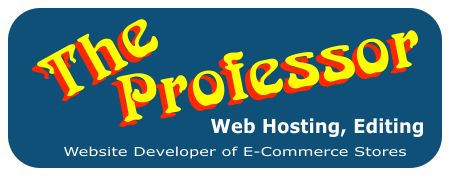
Canonical Tags: What They Are and How to Use Them
In the ever-evolving landscape of search engine optimization (SEO), canonical tags play a crucial role in helping websites manage duplicate content and improve their search engine rankings. Understanding what canonical tags are and how to use them effectively can be the difference between a well-optimized website and one that struggles to maintain visibility in search engine results pages (SERPs). In this article, we'll explore the concept of canonical tags, their importance, and best practices for implementing them.
What are Canonical Tags?
A canonical tag, also known as a "rel=canonical" link element, is an HTML element used to inform search engines about the preferred version of a web page. Essentially, it tells search engines which version of a page should be considered the "canonical" or original source, helping to consolidate duplicate content under a single URL. This is particularly important for SEO because search engines strive to avoid indexing multiple versions of the same content, which can dilute the visibility and authority of a page.
Why are Canonical Tags Important?
Managing Duplicate Content: Duplicate content can arise for various reasons, such as having multiple URLs for the same page (e.g., with and without URL parameters), or having similar content on different pages. Canonical tags help search engines understand which version of the content should be prioritized, thus avoiding penalties associated with duplicate content.
Improving SEO: By consolidating duplicate pages, canonical tags can help direct the ranking power and authority to the canonical version. This improves the chances of the preferred page ranking higher in SERPs.
Streamlining Crawl Budget: Search engines allocate a limited crawl budget to each website, meaning they only spend a certain amount of time crawling a site. Canonical tags help search engines focus on the most important pages, ensuring efficient use of the crawl budget.
How to Use Canonical Tags
Implementing canonical tags correctly involves several key steps:
Identify Duplicate Content: Conduct a thorough audit of your website to identify pages with duplicate or similar content. Tools like Screaming Frog, Google Search Console, and third-party SEO software can help with this process.
Choose the Canonical URL: Decide which version of the content should be the canonical version. This is typically the most authoritative or highest-quality version of the content.
Add the Canonical Tag: Insert the canonical tag in the HTML head section of the duplicate pages. The tag should look like this:
html<link rel="canonical" href="https://www.example.com/canonical-page-url/">Replace
https://www.example.com/canonical-page-url/with the URL of the preferred version.Verify Implementation: Use tools like Google Search Console and SEO auditing tools to verify that the canonical tags are correctly implemented and recognized by search engines.
Best Practices for Canonical Tags
Consistency is Key: Ensure that canonical tags are consistent across your site. If you have multiple pages with similar content, make sure they all point to the same canonical URL.
Avoid Self-Referencing Canonical Tags: While it's common practice to use self-referencing canonical tags (where a page points to itself), this is unnecessary. Instead, focus on using canonical tags only for duplicate or similar pages.
Be Mindful of Parameterized URLs: When dealing with URL parameters (e.g., tracking parameters, session IDs), make sure the canonical tag points to the clean, parameter-free version of the URL.
Monitor Regularly: Regularly check your website for new instances of duplicate content and update canonical tags as needed. SEO is an ongoing process, and maintaining the accuracy of your canonical tags is crucial.
Conclusion
Canonical tags are a vital tool in the SEO toolkit, helping to manage duplicate content, improve search engine rankings, and streamline the crawling process. By understanding what canonical tags are and how to use them effectively, you can enhance the visibility and authority of your website in search engine results. Implementing canonical tags may seem like a small detail, but it can have a significant impact on your overall SEO strategy.

Leave a Comment